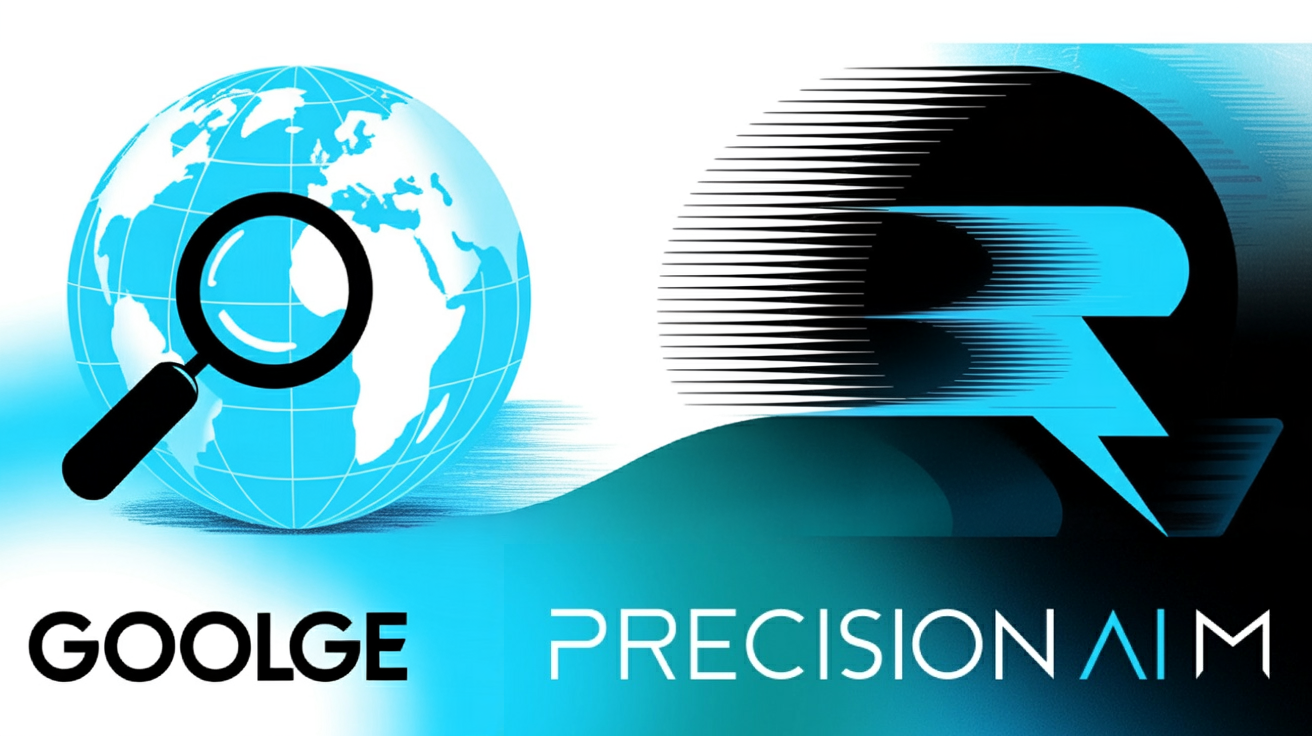Getting your website’s pages indexed quickly can make or break your visibility in search results. If you’ve ever waited days for Google to notice a new page—or missed a time-sensitive opportunity—you know how frustrating slow indexing can be.
In my experience, choosing the right indexing tool isn’t always straightforward. Google Search Console offers reliability and deep analytics, but it’s not built for speed. Rapid URL Indexer, on the other hand, promises near-instant results and transparent success rates, which can be a game-changer for urgent campaigns or bulk launches.
This article breaks down how both tools handle indexing speed, success rates, and real-world scenarios. I’ll compare their strengths, highlight privacy and compliance considerations, and share best practices for agencies and site owners. You’ll see exactly when to use each tool—and how to combine them for maximum impact.
By the end, you’ll have a clear, practical framework for deciding which indexing solution fits your goals, whether you’re running a personal blog or managing large-scale SEO campaigns.
Google Search Console vs Rapid URL Indexer: How to Decide
Let’s take a moment to unravel how website indexing works—and why it’s so vital if you want your site to be found by anyone searching online. When a page is described as "indexed," it simply means search engines like Google or Bing have discovered the page, analysed its contents, and archived it in their enormous database. Imagine it like adding your book to a library’s catalogue; until it’s indexed, readers can’t stumble upon it—no matter how brilliant the writing.
If you’re trying to build links on other websites, I would strongly recommend trying to make sure that those links are on pages that are actually indexed. And ideally, on pages that are not just indexed but are actually findable in search for queries that are relevant to your website.
Everything kicks off with search engine crawlers. These automated bots start at your homepage or sitemap, eagerly following hyperlinks and scanning each page they find. Their evaluation is remarkably thorough: they read your text, look at images, and dive into the behind-the-scenes elements, such as meta data and structured data.
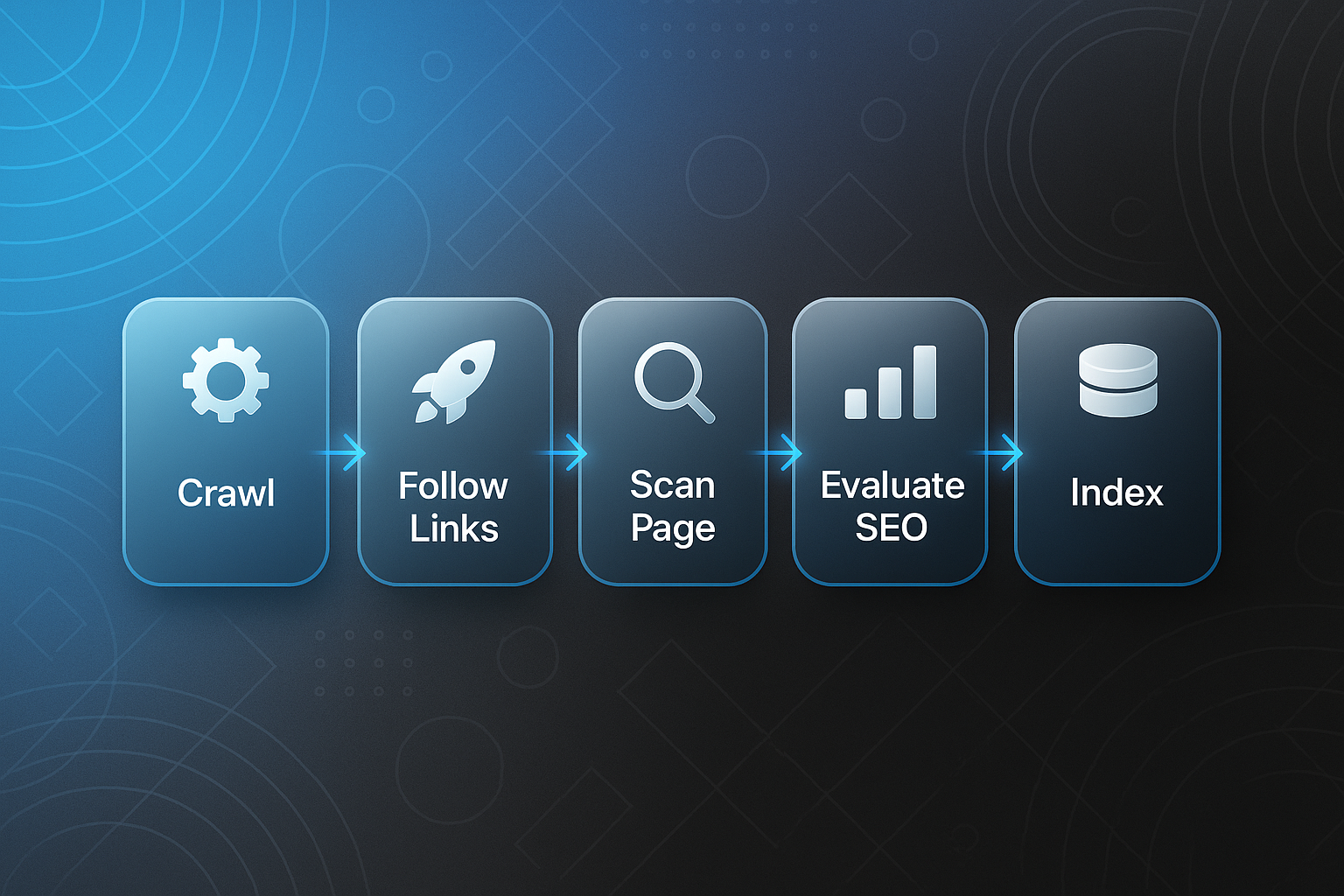
But that’s not the end of it. Crawlers judge pages based on SEO signals—like relevant keywords, structure, and header tags. If a page passes muster, it lands in the index and becomes searchable. This index isn’t static, either. Search engines keep revisiting and updating pages, making sure results display the freshest, most accurate content.
What Can Go Wrong With Indexing?
You might assume every page you publish gets indexed, but that’s not guaranteed. Technical issues crop up more often than you’d expect: a mishandled robots.txt file can accidentally block crawlers, ‘noindex’ tags can make a page vanish, and anything guarded by login requirements is simply left invisible. Duplicate or poor-quality content is typically skipped, as search engines prioritise value. Weak internal linking can leave pages isolated and undiscovered, and if your site is sluggish or error-prone, crawlers may give up altogether.
Why Does Rapid Indexing Matter?
In fast-moving settings like newsrooms or flash-sale e-commerce, rapid indexing is instrumental in catching those fleeting chances for visibility. The quicker your update appears, the sooner your audience finds it, letting you ride the wave of current interests and trends. And there’s another benefit: promptly indexed content gives SEO teams faster feedback, so they can tweak and improve strategies much sooner.
So here’s the thing—effective, timely indexing underpins your entire search presence. You could have superb content, but unless it’s in the index, it might as well be invisible. That’s why this step is truly the gateway to organic online growth.
Comparing Key Features: Google Search Console vs Rapid URL Indexer
Indexing Speed and Success Rate
How long before your newly published page appears in search results? That’s the question most website owners are really asking. The answer hinges on whether you use Google Search Console (GSC) or Rapid URL Indexer (RUI)—and the difference is more than a minor detail.
With GSC, most URLs land in Google's index somewhere between 1 and 7 days after submission. High-authority sites—like prominent news outlets or major e-commerce players—often see updates indexed in hours. But a smaller blog or newly launched site? Those can be left waiting days, sometimes longer, particularly when there’s little history or domain credibility to give them a boost.
RUI, though, is built for speed. The vast majority of users see URLs indexed in just 1 to 48 hours. There’s another crucial fact: RUI boasts an average indexation success rate of around 91%. If your business is chasing immediate visibility—perhaps for time-limited promotions, breaking stories, or seasonal campaigns—that kind of turnaround is hugely valuable.
Several elements help determine overall speed:
- Domain authority
Established sites get crawled and indexed more reliably. - Content freshness
Updates, especially ones tied to news or trending topics, tend to attract quicker attention from search engines. - Crawl budgets and relevance
Google has to pick which pages are most deserving of its bot’s energy.
Real-World Use Cases
Let’s say you’re dropping a flash sale or reporting live from a major event. Sitting in the GSC queue could mean missing the moment when your audience’s interest is at its highest. In these situations, RUI’s rapid indexing can tip the scales in your favour. Of course, for evergreen resources or routine blogging with no time pressure, GSC provides a simple, free way in—especially for users who don’t mind waiting.
Success Rate Comparison
This part gets interesting. GSC doesn’t publicise its indexation success rates at all; you’re left trying to interpret coverage reports, which aren’t always immediate or complete. RUI takes a much more transparent approach—they publish an average success rate and share post-submission results (successful and otherwise), letting SEOs track performance with certainty. When you’re handling huge campaigns or hundreds of links, that clarity makes planning far less of a guessing game.
Handling Index Failures
Nobody enjoys discovering that a key page wasn’t indexed weeks after launch. With GSC, failures are easy to miss unless you check coverage reports manually. RUI is more proactive: users receive notifications if URLs fail to get indexed and can typically retry. Some RUI subscriptions even offer partial refunds for failures, helping agencies manage bulk campaigns with less rework and easier client reporting.
So, if your goals demand speed and transparency—especially for business-critical content—Rapid URL Indexer really shines. But for personal projects or regular page updates, GSC’s no-cost and simple system might be all you need. Agencies and organisations with big indexing needs? They’ll get the most value from RUI’s real-time tracking and clear outcome management.
Blog-in-one-minute
Add a fully SEO-optimised blog to your website with just 2 lines of code.
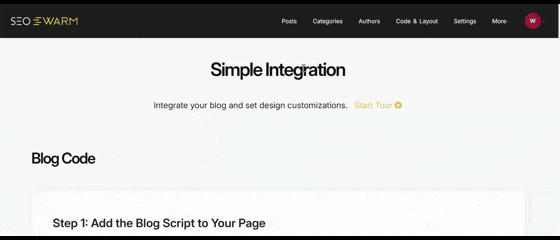
Benefits and Advantages of Google Search Console
If you're after a tool that truly delivers trustworthy SEO insights, Google Search Console (GSC) sits firmly at the front of the pack. Since it’s Google’s own platform, you benefit from first-party reliability—every impression, click, search query, crawl stat and error alert comes straight from Google itself, not a third party.
Here's where things get more interesting. GSC’s analytics dive deep, letting you monitor keyword positions, click-through rates, visibility shifts and performance trends. For hands-on site owners or detail-driven professionals, this is your SEO command centre—a practical way to spot wins and pinpoint issues needing attention.
But it’s not just dry numbers—the platform surfaces practical problems, too. Crawl errors, mobile usability snags, and Core Web Vitals updates all show up in real time, letting you fix technical issues early. Whether it’s a hobby blog or a sprawling enterprise site, you keep problems from snowballing. Imagine quickly catching a crawl error that might otherwise keep critical pages out of the index—GSC’s impact is immediately tangible.
Seamless Integration and Collaboration
GSC isn’t an island. Connected with Google Analytics, you see search and behaviour in one view. For teams or agencies managing campaigns, unified dashboards make reporting and collaboration a breeze.
Need to update stakeholders or clients? That integration means you deliver clarity, not confusion—turning complex search data into easy, focused conversations. Teams stay aligned without headaches.
Compliance, Security, and Peace of Mind
If compliance matters—think large agencies or brands launching sensitive products—GSC’s policy-aligned processes and audit trails shine. User verification keeps sensitive data private, providing built-in protection and governance.
And let’s not gloss over this last point: GSC is entirely free for site owners. Budget-conscious marketers get full visibility with zero spend, and everyone enjoys confidence by sticking to Google’s SEO rulebook. If you want sustainable, audit-proof SEO, GSC is foundational, not just helpful.
When to Use Each Tool: Scenarios and Best Practices
When Does Google Search Console Shine?
So, when do you reach for Google Search Console (GSC)? It’s the obvious choice for steady site maintenance and keeping everything running smoothly over time. If you’re regularly updating a company blog, showcasing your latest portfolio pieces, or building up a reliable SME website, GSC delivers reliable results—without costing a penny.
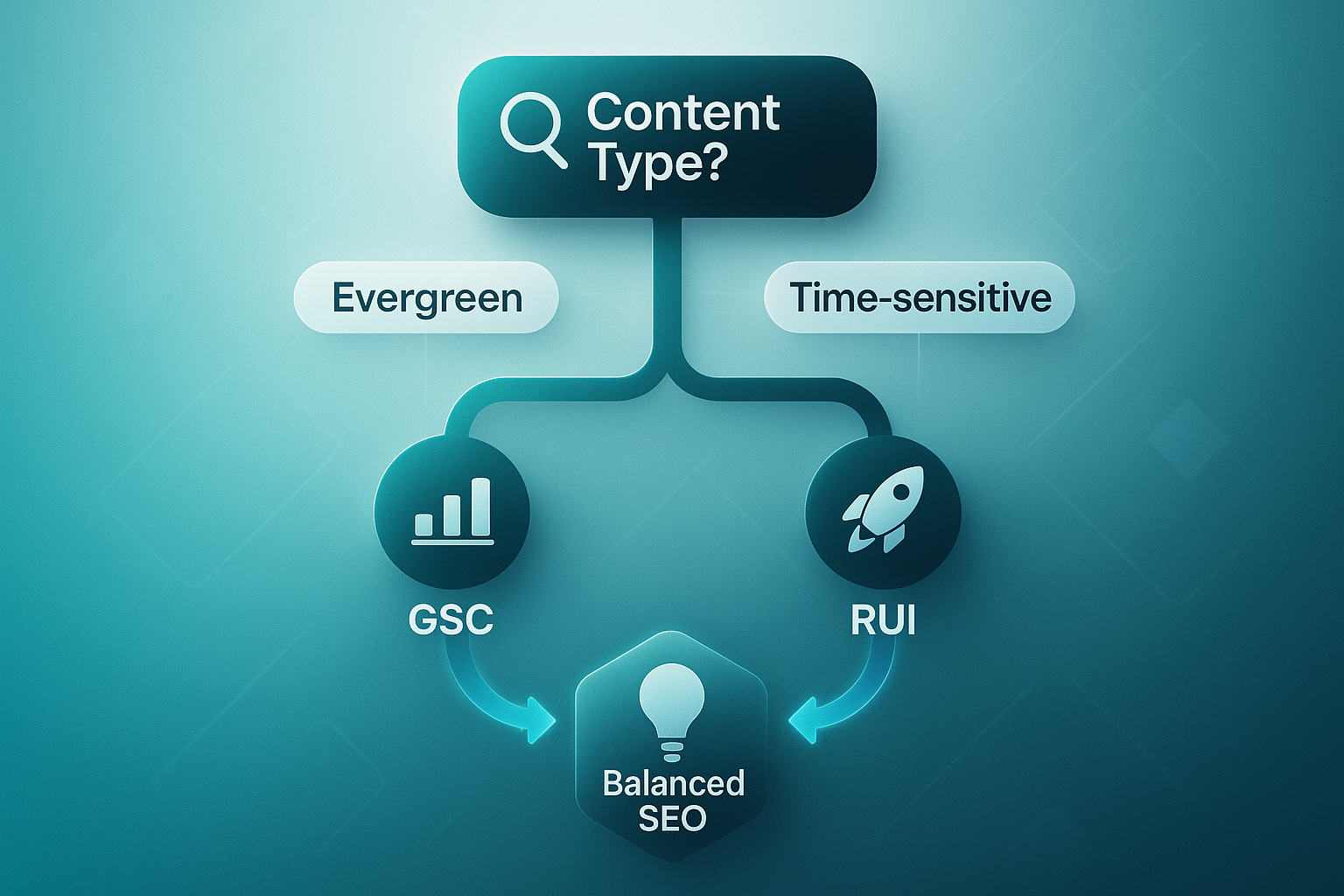
The real draw is that all analytics and indexing come straight from Google itself. Anytime you face technical glitches—maybe a crawl error, mobile display headache, or that maddening duplicate content message—you get real-time updates and focused advice. For businesses that must prioritise privacy and compliance above all, GSC’s framework, straight from the source, aligns with official policies and keeps sensitive data protected.
Where Does Rapid URL Indexer Make a Difference?
Now, sometimes you simply cannot wait. That’s when Rapid URL Indexer (RUI) steps up. It really shines for big pushes—think mass product launches or shifting an entire site to a new domain. If you’ve got hundreds or thousands of URLs that need to be visible yesterday, RUI’s speed is its signature.
For time-sensitive campaigns—those flash sales, product drops or headline-grabbing news events—RUI’s near-instant indexation ensures you reach your audience while it matters most. It also excels in off-page SEO, especially efficient backlink indexing and penalty recovery when time is of the essence. Agencies often notice faster search ranking impacts during high-stakes launches with RUI than with GSC alone.
Why Not Use Both?
You know what’s interesting? Many marketing teams blend both tools for a force-multiplied effect. For urgent or high-volume changes, RUI leads the charge, firing your newest and most urgent pages straight into the index. GSC, meanwhile, acts as your steady command centre—measuring analytics over time and flagging technical hiccups.
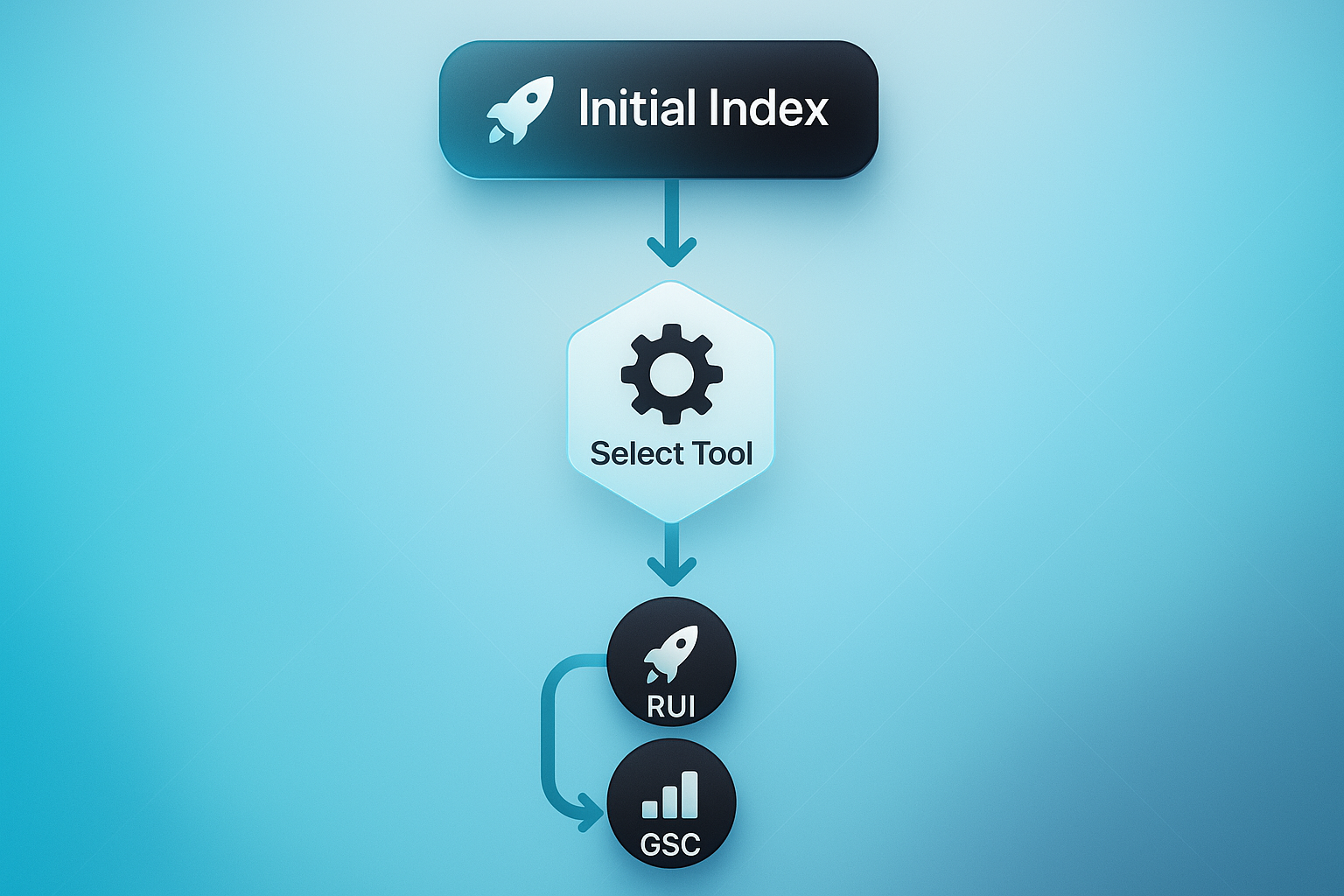
By combining the two, you get the best of both worlds: rapid results where it counts, and long-term assurance everywhere else. The one caveat? Moderation is key—overusing rapid indexers can waste crawl budget or inadvertently push thin content into search results.
How Should Agencies and SMEs Decide?
So, how do you choose between them? It really comes down to budget, urgency and your working style. GSC is a safe bet for ongoing, compliance-driven SEO—especially if you’re watching costs. RUI’s paid plans are worth it when fast results provide real returns, like with major launches.
Larger agencies gravitate to RUI for automation and scale. Smaller businesses may prize GSC for its simplicity. Whatever you pick, strategic rules—like setting clear policies, careful risk reviews and training your team—are instrumental in getting reliable results and staying in Google’s good books.
Which Tool Fits Which Scenario?
| Scenario | GSC | RUI | Combined Approach |
|---|---|---|---|
| Routine updates | ✔ Cost-free, reliable | ✖ Not optimal | Mostly GSC |
| Bulk launches | ✖ Manual, slow | ✔ Fast, scalable | RUI + GSC monitoring |
| Technical troubleshooting | ✔ Advanced analytics | ✖ Limited support | RUI index, GSC diagnose |
| Backlink management | ✖ Manual only | ✔ Rapid, bulk submission | RUI for links, GSC review |
| Compliance & privacy | ✔ First-party, secure | ✖ Third-party risks | Stick with GSC |
| Time-sensitive campaigns | ✖ Slow initial indexing | ✔ Instant results | RUI for speed, GSC analytics |
Deciding isn’t about picking a single winner. It’s about matching your tool to your mission—so your site gets speedy attention when you need it, but long-term SEO strength that keeps compounding over time.
Advanced Considerations: Privacy, Compliance, and Long-Term SEO Impact
Privacy and Data Security Implications
Let’s dig into privacy, because so much depends on it. Google Search Console (GSC) works inside industry-standard security, benefiting from Google’s own robust infrastructure.
Your data in GSC is non-personal and aggregated. It’s wrapped in layers—multi-factor authentication, regular audits, and strict controls help keep things safe.
Third-party tools such as Rapid URL Indexer (RUI) are a different story. Some offer strong security, but others fall short. This creates uncertainty; a tool that logs, stores, or processes data poorly can expose company information to risk.
Whenever you approve API access, check what permissions you're granting. Audit integrations regularly and disconnect anything you don’t totally trust. No one wants a surprise data breach.
Compliance Risks and Mitigation Strategies
GSC operates within Google’s compliance rules, offering peace of mind. But rapid, bulk indexing via RUI can sometimes raise eyebrows—they’re more likely to trigger concerns over unnatural behaviour.
Push too hard, and Google could react. Manual actions, ranking drops, or even removal from search results are real dangers. To prevent this, make GSC your foundation for indexing, use RUI sparingly, and keep your strategies in line with Google’s published guidelines.
Notice any manual action warnings in GSC? Act quickly—penalties linger if ignored.
Long-Term Effects on Rankings and Site Health
Bulk indexers might make your site’s growth look odd, or flood the search index with low-value URLs. This can lead to penalties or future removal.
Too much low-value content wastes your crawl budget—Google focuses less on your important pages. Lasting SEO hinges on high-quality, relevant pages, sound technical fundamentals, and careful automation with human oversight.
That’s how you maintain strong rankings over time.
Quick Reference: Advanced Risk Factors
| Risk Factor | Google Search Console | Rapid URL Indexer |
|---|---|---|
| Privacy & Security | Secure, first-party | Variable, potential risks |
| API Permissions | Strictly limited | May expose more data |
| Compliance | High with guidelines | Potential for violation |
| SEO Outcome | Stable, sustainable | Risk: devaluation, bloat |
| Site Health | Proactively managed | Needs close moderation |
Optimising Indexing Results with SEOSwarm: Scalable SEO Content Strategies
How SEOSwarm Supports Indexing Effectiveness
Here’s the thing—SEOSwarm is engineered to force-multiply your SEO results. It automates research-led blog creation, so every post delivers essential schema markup—like Article, BlogPosting, Product, and FAQ.
This comes with tightly integrated internal links, so your whole site stays connected and easy for search engines to crawl. Orphaned pages and missing metadata? SEOSwarm’s agent-powered automations all but eliminate those, handling technical SEO at scale.
That means agencies skip manual slip-ups and build content that’s ready for rapid indexers and Google’s own bots. In practice, your pages are rarely left invisible for long—search engines latch on quickly.
Integration Best Practices
Wondering how to really harness SEOSwarm with indexing tools? The magic is in the workflow. Begin by planning and publishing your content in bulk with SEOSwarm, then submit those URLs through Rapid URL Indexer for immediate search inclusion.
But don’t forget Google Search Console—it’s still vital for monitoring what’s actually indexed and for spotting shifts as they happen. Secure API access ties all this together, keeping your data synced for smooth teamwork.
If you’re juggling multiple sites, multi-account support in SEOSwarm lets agencies streamline client management. Analytics dashboards reveal keyword gaps and underperformers. That’s how teams trigger rapid updates, especially in major launches or ongoing campaigns.

Maximising ROI from Indexing Tools
When automation works with analytics and indexing, you unlock compounding SEO gains. Here’s the proven flow:
- Content planning
Target high-impact, relevant keywords. - Automated publication
SEOSwarm handles flawless technical setup. - Bulk URL submission
Rapid URL Indexer brings instant visibility. - Performance monitoring
Google Search Console tracks what’s happening. - Iterative optimisation
Use analytics feedback to refine content.
Unified workflows mean faster troubleshooting, stronger rankings, and sustainable, measurable growth—with teams poised to seize SEO opportunities the moment they arise.

AI-Powered Content Strategy
See the AI platform that's replacing entire content teams (with better results).

My Take on Google Search Console vs Rapid URL Indexer
Speed isn’t everything, but in SEO, timing can make or break your visibility. I’ve seen too many great pages languish in obscurity simply because they weren’t indexed fast enough—or at all. That’s why choosing the right indexing tool isn’t just a technical decision; it’s a strategic one.
If you need instant results for high-stakes launches or time-sensitive campaigns, Rapid URL Indexer is your ace. For ongoing site health, compliance, and deep analytics, Google Search Console remains indispensable. My advice: don’t treat this as an either/or choice. Use both tools in tandem—RUI for speed, GSC for oversight—to cover every angle and keep your SEO efforts resilient.
The real edge comes from matching your indexing strategy to your business goals, then refining as you grow. In SEO, the winners aren’t just the fastest—they’re the ones who adapt with clarity and purpose. — Wil
